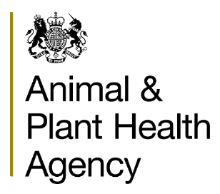Comparative genomics of quinolone-resistantand susceptibleCampylobacter jejuniof oultry origin from major poultry producing European countries (GENCAMP)
EFSA Journal publish this article
March 12nd, 2018
Leekitcharoenphon P., Garcia-Graels C., Botteldoorn N., Dierick K., Kempf I., Olkkola S., Rossi M., Nykasenoja S., Malorny B., Stingl K., Battisti A., Franco A., Mossong J., Veldman K., Mevius D., Wasyl D., Wieczorek K., Osek J., Clemente L., Lacatus A., Nicorescu I., Aguero-Garcia M., de Frutos-Escobar C., Duran-Ferrer M., Ugarte-Ruiz M., Anjum MF., Teale C., Agren J., Hendriksen RS. and Aarestrup FM.
A total of 502 Campylobacter jejuniisolates from poultry in 12 different European countries(10 of them the largest poultry production countries in Europe)werewhole genome sequencedto examine the genomic diversity of fluoroquinolone resistant (FQ-R) and susceptible(FQ-S)C. jejuniacross the poultry producing European countries and to determine whether the emergence of fluoroquinolone resistance among C.jejuniis related to the transmission through countries or to the selection through fluoroquinolone use in the individual countries. A high genomic diversity was observed. The isolates clustered in fourmain clusters. All trees revealed that the isolates were clustered according to the presence/absence of the gyrA mutationscausing fluoroquinolone resistance and ST-types. The cgMLSTtrees of only FQ-R and FQ-S isolates showed that isolates from the same country of origin were distributed into multiple clusters similarly to the trees combining FQ-R and FQ-S isolates. The different phylogenetic methods,ranging from single nucleotide polymorphisms analysisto gene-by-gene approaches such as rMLST, cgMLST, wgMLST and core genome tree,provided concordant results, but it is not known which is the most accurate methodfor identifyingthe country of originof the isolates.Allele frequency analysis of isolatesunder this study and a selection of previously published C.jejunigenomes inENAshowed association of geographical origin of poultry C. jejunipopulations between Romania-Poland, Italy-Germany-England, Portugal-The Netherlands and USA-Luxemburg. Allele frequency and phylogenetic analysis indicated that the isolates from Finland were genetically different from C. jejunipopulations from other European countriesincluded in this study
Related link: Comparative genomics of quinolone-resistantand susceptibleCampylobacter jejuniof oultry origin from major poultry producing European countries (GENCAMP)
| Research Group for Genomic Epidemiology. National Food Institute (DTU Food). Technical University of Denmark (DTU). 111 | |
| Institut Scientifique Santé Publique (WIV-ISP). 111 | |
| Facultad de Veterinaria. Universidad de Zaragoza (UNIZAR). 111 | |
| 111 | |
| Microbiology Research Unit. Finnish Food Safety Authority (EVIRA). 111 | |
| Federal Institute for Risk Assessment (BfR). 111 | |
| Istituto Zooprofilattico Sperimentale delle Regioni Lazio e Toscana (IZSLT). 111 | |
| Laboratoire National de Santé. 111 | |
| Central Veterinary Institute. Wageningen University (UR). 111 | |
| Department of Hygiene of Food of Animal Origin. National Veterinary Research Institute (PIWET). 111 | |
| National Reference Laboratory for Bovine Tuberculosis. 111 | |
| Instituto Nacional de Investigação Agrária e Veterinária (INIAV). 111 | |
| Institute for Hygiene and Veterinary Public Health (IHVPH). 111 | |
| Laboratorio Central de Veterinaria-Sanidad Animal. 111 | |
 | Servicio de Zoonosis de Transmisión Alimentaria y Resistencia a Antimicrobianos (ZTA). Centro de Vigilancia Sanitaria Veterinaria (VISAVET). Universidad Complutense (UCM). 111 |
 | Department of Bacteriology. Animal and Plant Health Agency (APHA). 111 |
| Department of Microbiology. National Veterinary Institute (SVA). 111 | |
